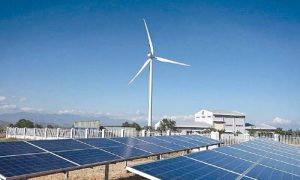Pakistan is producing very limited percentage of oil to meet the overall demand of the country. The indigenous oil production is somehow constrained by a number of technological , technical and financial constraints. Quite obviously this necessitates import oo oil and other oil products in large quantities to meet significant share of the total demand..
Latest data now available from source s concerned in somewhat belated manner indicates that import bill of oil had increased by as much as 95.9 per cent to US $ 27.03 billion during July-April FY2022 compared to US $ 8.69 billion during the same period last year. Higher prices in the international market and massive depreciation of Pakistani rupee was making oil more expensive, triggering external sector pressure and widening trade deficit pf the country. The surge in oil import bill is attributed by the sources concerned to increase in value as well as increase in demand as the import of petroleum products went up by 121.15 per cent in value and 24.18 per cent in quantity. The crude oil import rose by 75.34 per cet in value and 1.4 per cent in quantity during the period under review. Similarly, liquefied natural gas also witnessed an increase of 82.90 per cent in value while liquefied petroleum as (LPG) imports also jumped up by 39.86 per cent during July-April FY2022.
The scarce natural gas reserves of the country are also rapidly depleting due to substantial increase for gas ,putting huge pressure on the limited natural gas reserves of the country. In view of this, the federal government is looking for both short as well as long term alternative solutions to respond effectively to the substantial energy requirements. Keeping in view the rising demand for energy, the federal government is focusing on to develop new exploratory wells to increase the supply of natural gas. In addition to that, LNG and piped gas are also being imported. In the FY2021, around 373 million MMBTU of LNG worth round US $ 3.4 billion was imported. This corresponded to around 30 per cent of the total natural gas consumption in the country. During July-February FY2022, 75.64 per cent gas was domestically produced while 24.36 per cent of gas was imported.
Coal is also being used for electricity generation in Pakistan.. That has the largest coal reserves in the country which has been actively developed in the recent years. The first That plant, having capacity of 660 MW became operational in the first quarter of FY2020. Currently, the overall electricity generation from coal has reached to 5280 MW. Thar coal is contributing 1320 MW while imported coal contribution in the electricity generation is 3960 MW which is around 75 per cent of the total electricity generation from coal in the country. Electricity generation configuration
is relying heavily on the imported coal and the trend is likely to change as units based on the Thar field are being added to the electricity generation mix.
Pakistan is very rich in hydropower and has the enormous potential to generate electricity from water. The estimated total potential of Pakistan is around 60,000 MG. The country is not utilizing full potential and using only nearly 16 per cent of the total hydropower potential. The high investment cost for the installation of hydroplants , development of electricity transmission network and resettlement of the affected population are few reasons doe hydropower not being exploited to its full capacity. Currently , the hydro installed capacity is 10251 MW which is around 25 per cent of the total installed capacity.
Pakistan has wind corridors as well and there is huge potential to generate electricity from wind. It is estimated that Pakistan can generate 50,000 MW from wind. The contribution of wind in the total installed capacity is 4.8 per cent and currently stood at 1985 MW. The potential for solar power in Pakistan is also high. The sunlight is available abundantly almost throughout the country.. Currently, the capacity share of these renewable resources is very small, but it is expected to increase sharply, as reflected in the Alternative and Renewable Energy Policy 2019.The installed capacity of solar is 600 MW which is round 1.4 per cent of the total installed capacity. Pakistan is also producing energy from the nuclear technology whose contribution is increasing gradually. The gross capacity of the nuclear power plants was 2530 MW that supplied about 7076 million units of electricity to the national grid during July-March FY2021. The gross capacity of nuclear power plants has increased by 39 per cent and it stood at 3530 MW that supplied 12,8855 million units of electricity to the national grid during July-March FY2022.








